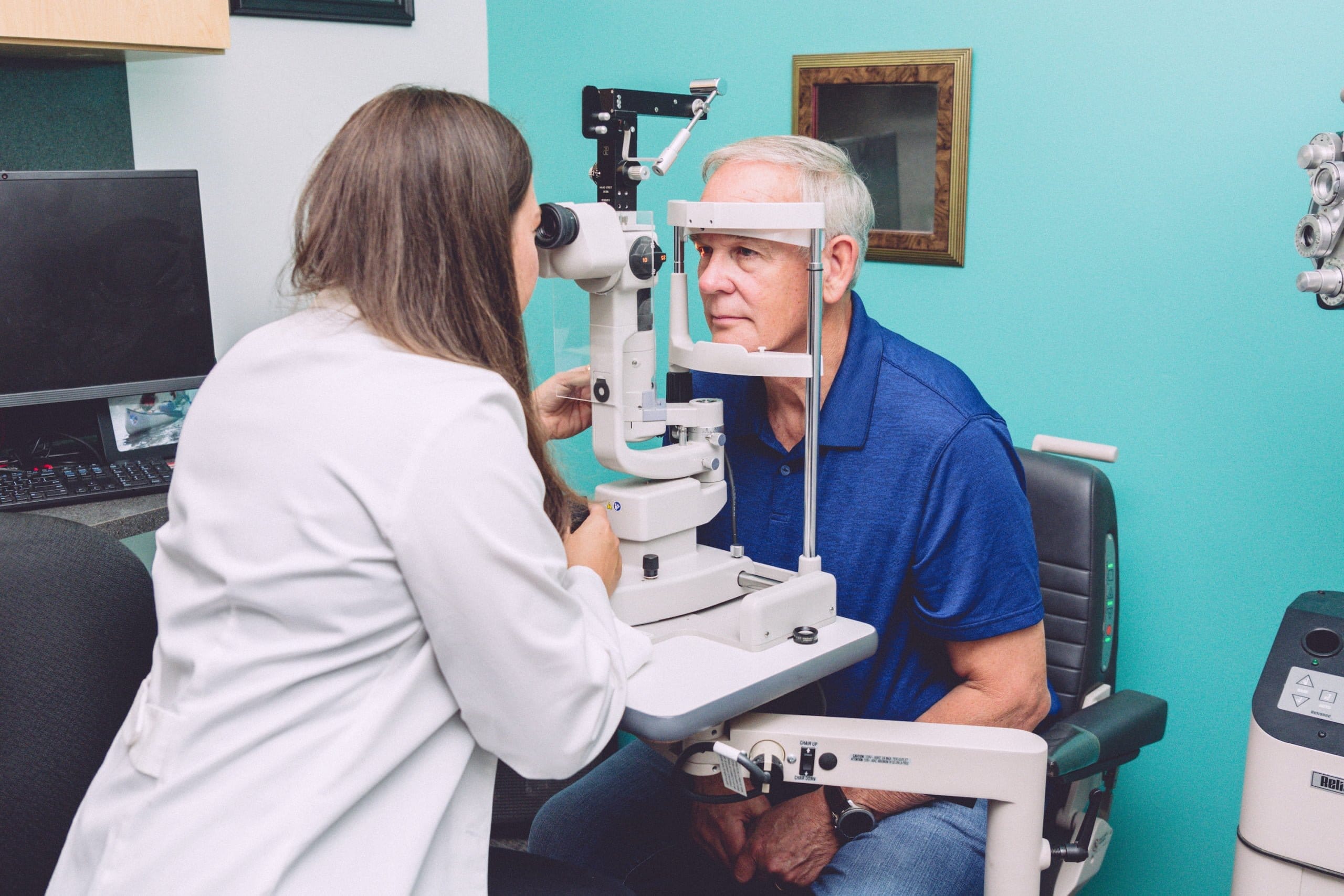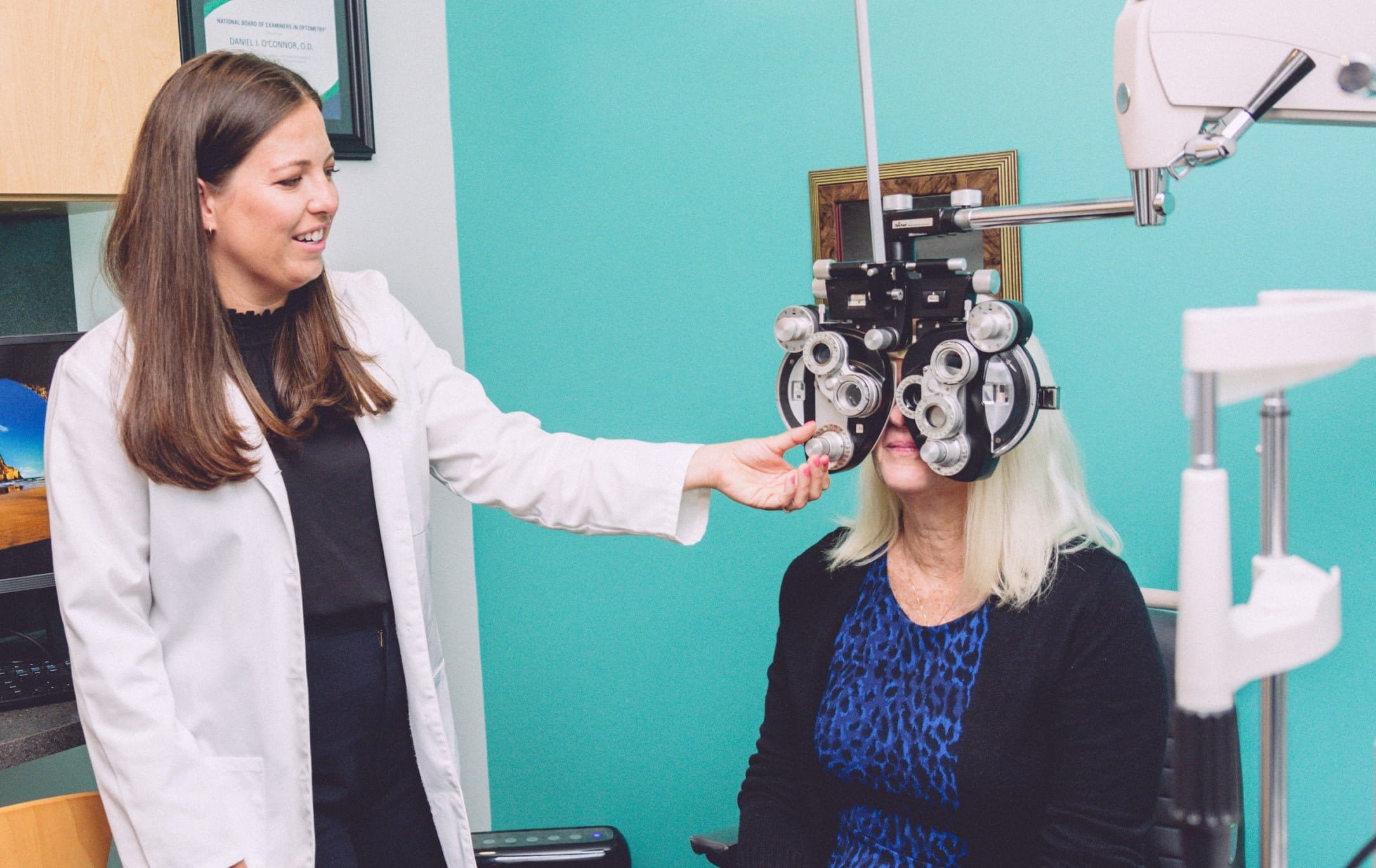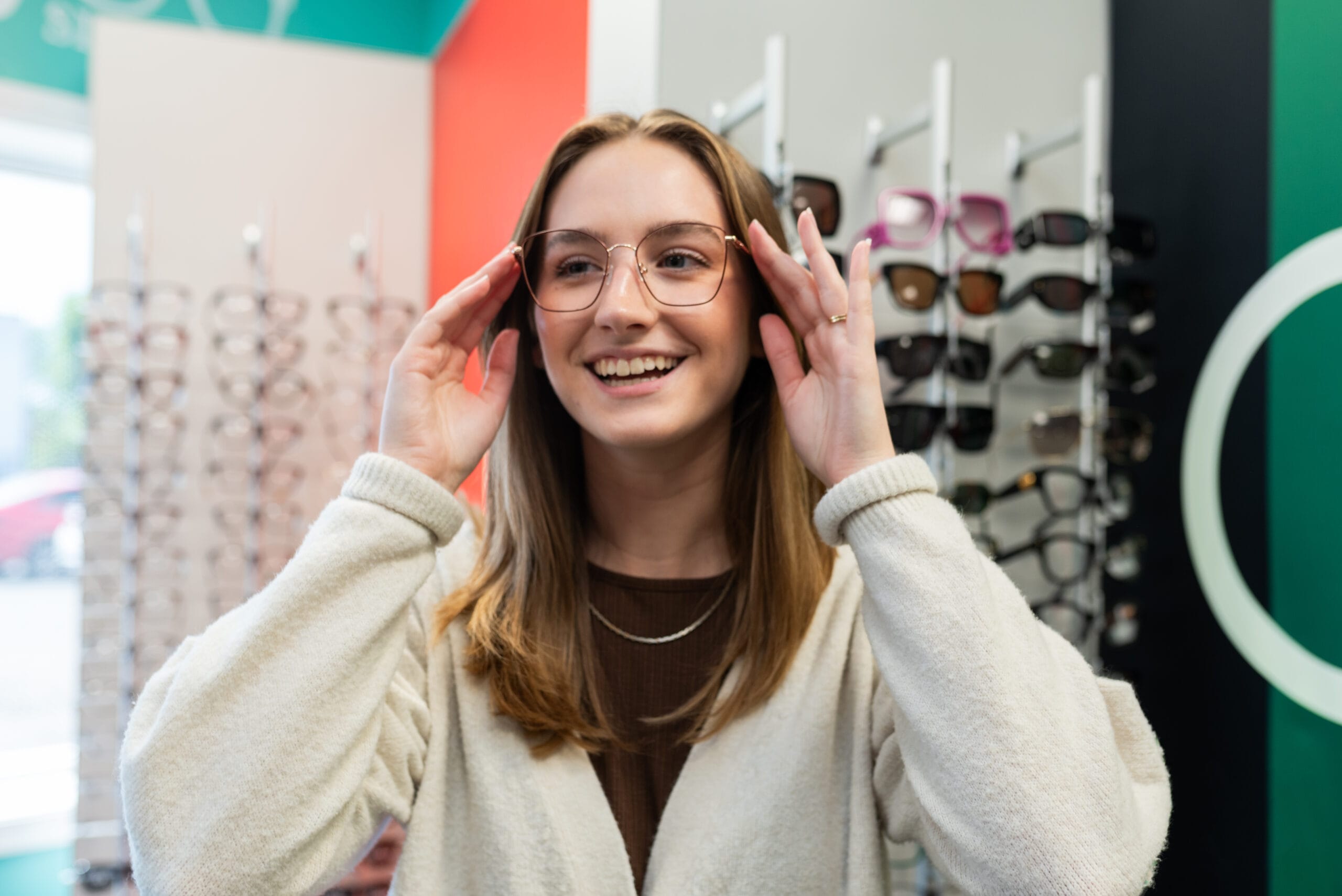February is Age-Related Macular Degeneration Awareness Month. It’s a very wordy term for a common eye disease. Did you know that age-related macular degeneration, also known as AMD, is a leading cause of vision loss for Americans aged 50 and older? This condition affects central vision, which makes daily tasks such as driving, reading, and recognizing faces more difficult.

What is Age-Related Macular Degeneration?
Macular degeneration occurs when the macula, the round area at the center of your retina becomes damaged. The macula is located at the back of your eyeball and processes what you see directly in front of you (central vision).
Types of Age-Related Macular Degeneration (AMD)
There are two types of age-related macular degeneration, commonly referred to as “dry AMD” or “wet AMD.”
Dry AMD
Dry AMD, also called atrophic AMD, is the most common form of macular degeneration. According to the AAO, about 80% of those with AMD have the dry form. This condition occurs when parts of the macula get thinner, and the eye cannot create any new blood vessels. Instead, small particles made up of protein and lipids form inside the eye, which are called drusen. This causes a slow progression of vision loss.
What Are Drusen?
Drusen are yellow deposits that can develop under the retina. Drusen occur naturally as you age and don’t directly cause AMD. However, a large amount of drusen is a clear sign of AMD.
Unfortunately, no treatments currently are available for dry AMD. Instead, the best way to manage dry AMD is to slow its progression by making healthier lifestyle choices such as eating more leafy greens, exercising more, and refraining from smoking.
Wet AMD
Wet AMD, also called neovascular AMD, occurs when abnormal blood vessels start to grow beneath the retina to compensate for the damaged and dead blood vessels. The new blood vessels leak fluid and blood in the layers of the retina — which distorts eyesight and can create a large blind spot in the center of your vision. Wet AMD is less common than dry AMD, but can cause more severe vision loss.
Symptoms of Age-Related Macular Degeneration
AMD is unlike other eye diseases in which there are not many early warning signs. For some, macular degeneration can take years to develop and is not noticed until vision loss occurs. Catching macular degeneration early with an eye exam is critical for preserving your vision.
Common symptoms of macular degeneration include:
- Blurry vision
- Dark spots in your vision or a dark spot in the center of your vision
- Loss of color vision
- Difficulty recognizing faces
Who is most at risk?
People over the age of 50 are the most common group at risk for AMD, but family genetics and lifestyle choices can also increase your risk of developing AMD.

How To Lower Your Risk for Age-Related Macular Degeneration
Healthy Diet
Eating a diet rich in healthy greens, fruits, veggies, and fish is beneficial to slow the progression of many eye diseases, including AMD.
Quit Smoking
Smoking doubles your risk of developing age-related macular degeneration.
Exercise regularly
A less sedentary lifestyle aids in your overall health, including your eyes. Talk to a healthcare professional about implementing an exercise routine.
See an Eye Doctor Annually
A comprehensive eye exam can detect macular degeneration early, as well as many other eye diseases. When AMD is caught in its earliest stages, it is easier to maintain your vision.
How Does Dr. Tavel Treat Age-Related Macular Degeneration?
Your eye doctor can diagnose and monitor your AMD. You may be required to see your optometrist more frequently to monitor the progression of wet macular degeneration. If needed, Dr. Tavel will refer you to a retinal specialist for additional treatment options.
Prioritizing your eye health starts with scheduling an eye exam. Schedule your next visit online or by calling 844-GO-TAVEL.
